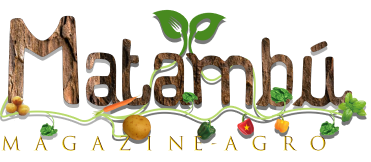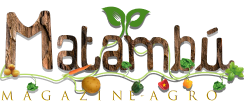[ad_1]
Felicia Twumasi
Felicia Twumasi established Homefoods in 1995. The thought for a business had been brewing since she was at convent college. Initially, the corporate targeted completely on the export of crimson palm oil, securing substantial market share by a companion within the UK underneath the Blue Bay label, however at the moment it additionally produces a vary spices and seasonings, sauces and native Ghanaian favourites equivalent to gari. Jeanette Clark spoke to Felicia about placing a provide chain in place, export vs native markets and the grind to develop the corporate’s buyer base.
Finding export shoppers within the time of fax machines
The alternative of palm oil as Homefoods’ first product was a sensible one. Felicia’s dream was so as to add worth to major agricultural produce, however after college, she rapidly realised she didn’t come up with the money for to spend money on the equipment required to course of perishables.
“I decided to start with something people use every day but that had a longer shelf life,” she says. “In this part of the world, we use red palm oil to cook everything; 20 years ago you would struggle to even find vegetable oil.”
Her sights have been set on the export market from the get-go. While palm oil was available in Ghana, Felicia realised the diaspora, dwelling overseas, was having a laborious time to get their fingers on it. “I saw it as a niche market and decided right then I was going to ship red palm oil to Europe and beyond.”
At the time, Felicia didn’t have an export consumer however extra importantly, she didn’t have any palm oil. The first step was to go to the Kaneshie market in Accra and pattern the product from totally different retailers. “I bought oil from different women and used it for cooking. Finally, I found one supplier whose oil was great. I explained what I was planning to do and she laughed at me. But I bought a 200-litre drum of palm oil from her and, with difficulty, rolled it to my apartment where I was living with my daughter,” she remembers.
The subsequent step was to search out a consumer for the oil. This was earlier than the web and e-mail, so Felicia spent a lot of time within the library, studying up about palm oil and growing her plan.
She contacted the commerce attachés of each the American and British embassies, asking for leads on attainable consumers. “The British attaché provided some leads. I wrote a lot of letters and sent faxes. Fortunately, one company replied,” she says. “We communicated by phone and fax and he ordered 100 cartons.”
And similar to that, Homefoods was in business. Felicia purchased the bottles she wanted and printed labels. She didn’t have a automobile, so she hitched a journey to the port together with her cartons, believing she might merely e book it on a ship and be executed with it. “I did not know you had to fill an entire container, or join the wait with smaller suppliers until one container was filled,” she admits.
“It took a bit longer to get to the UK than I anticipated but within a week of arriving, it sold out and the buyer ordered another 300 cartons.” His third order, two months later, was for a full container.
Establishing a provide chain
Felicia realised she wanted extra suppliers, and rapidly. Her solely provider took her to a village the place numerous girls might provide the oil. Homefoods established a cooperative, however the girls nonetheless required help and equipment to make sure the correct high quality and portions have been obtainable.
Felicia approached the ministry of agriculture, which was solely too glad there was a market to take the ultimate product from the processers. The ministry supported the challenge by its extension officers and agronomists within the area. “I value the support they gave me because I realised if it was going to take me six to eight weeks to fill a container, I would lose the market,” she explains.
With the assistance of the division of agriculture, a tank was erected within the village. The oil was added to this tank till a food-grade tanker might fetch it for bottling and labelling.
Homefoods equipped pumps and presses for the co-operative and the extension officers gave the ladies farmers seeds to develop their plantations.
“After about two years, we had everything in place. Later, we were able to convince the customs division to send a container straight to our yard, where they did the inspections and we could load the shipment.”
These measures helped Homefoods improve its exports from that first container to round 36 containers a yr, all to the one consumer who managed to safe a substantial market share in Europe and totally different elements of the US. “Because we packaged it under their label, no one knew it was coming from West Africa,” provides Felicia.
Country of origin necessities
For about 13 years, Homefoods was on this single observe, and it seemed prefer it was destined for continued progress and success. Then the certification companies in Ghana insisted the corporate determine the nation of origin on the bottle.
“We lost some of our market,” says Felicia. She ascribes it to a notion of the standard of merchandise from Africa on the time. Although, ultimately, it opened up new alternatives.
At that stage, the corporate had just one consumer. On her common travels to the UK consumer’s workplaces, she visited different attainable consumers. Finally, round 2008, a second UK firm confirmed curiosity. Ironically, it was one of many firms that had ignored Felicia’s unique fax correspondence.
Getting a third and fourth consumer proved simpler now that the nation of origin, and Homefoods’ identify, needed to be included on the oil label. It led to numerous queries from new consumers. “The internet is powerful, and some of the new customers could do their research and check on our consistency of quality. They could see our integrity in supply.”
Homefoods started supplying to numerous massive clients: Wanis International Foods (UK), Asia Express (Netherlands), Aheco Foods (Netherlands) and Transfood Grosshandel (Germany).
Market modifications led to elevated native alternatives
About a decade in the past, issues have been altering within the Ghanaian retail area. “When we started, the local market did not care how you packaged the palm oil – they were merely interested in getting the best price. They would even go to the local market and buy it in a polythene bag,” says Felicia.
But massive retailers like Shoprite started opening shops within the nation.
“At the same time, the middle class was growing. That is when I realised it was time for us to focus locally.” She recollects having to persuade Shoprite to have a shelf in-store that gave delight of place to native items. “Then came Game, Spar and Melcom. Today, our biggest local buyer is Melcom.”
Diversification into different product traces
Along with the transfer to promote extra within the home market got here the chance to diversify the vary. Customers who have been shopping for the palm oil requested Homefoods about spices and seasonings. The firm heeded the decision and steadily added to its line-up.
On its web site, it teams the varied merchandise into 5 totally different classes: the ethnic vary, e.g. crimson palm oil, vegetable oil and gari; seasonings equivalent to fish seasoning and waakye seasoning; sauces like shito; and processed root grains equivalent to banku combine. The web site additionally lists ready-to-eat meals equivalent to jollof rice, fava soup and peanut soup – a line that may start full business manufacturing as soon as the corporate’s new manufacturing facility is up and working with all new gear put in.
Felicia is happy concerning the prospects for these value-added merchandise. In June 2022, she is because of signal a contract with Griffiths Foods, a world distributor of food merchandise. “We have already entered into a partnership and exported some small consignments. There is definitely opportunity there.”
She additionally believes Homefoods’ ready-to-eat meals have a lot of progress potential due to the diaspora who lengthy for food from residence. “When I travel for work it is disappointing not being able to find good Ghanaian or West African cuisine,” she says. “These meals will solve that problem.”
Consumer tendencies equivalent to more healthy consuming and the necessity for comfort give Felicia hope this product line will carry out properly.
[ad_2]









